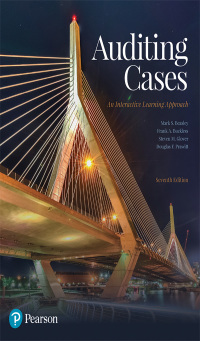Question
Identify a critique that was offered that you disagree with, and explain why in two paras you disagree in your reply Place-based policing,
Identify a critique that was offered that you disagree with, and explain why in two paras you disagree in your reply
Place-based policing, otherwise known as hot spots policing, stems from the law of crime concentration. The law of crime concentration was initially proposed in 1989 by Sherman, Gartin, and Buerger which stated that 'for a defined measure of crime at a specific microgeographic unit, the concentration of crime will fall within a narrow range of bandwidths of percentages for a defined cumulative proportion of crime' (Sherman et al., 1989). Essentially, it exemplified the concept of analyzing crime clusters at specific geographical locations. Hot spots policing emphasizes this ideology and asserts the allocation of police resources to geographic locations with an above average concentration of crime (i.e. clustering of crime). Although there are no proven positive impacts of hot spots policing on communities' perceptions of crime, disorder, perceived safety, satisfaction with police, and perceptions of procedural justice, there are also no negative impacts of such on a community (Ratcliffe et al., 2015)
Hot spots policing is performed by hot spot identification and then subsequently 'doing something' in those areas (i.e. modifying police tactics). Identifying hot spots can be done through a variety of crime mapping software such as geographic allocations, kernel density mapping, graduated symbol mapping, and HNN mapping. Most of these crime mapping softwares determine clusters of crime in a given jurisdiction, overlays police sectors, and then shades areas with high crime rates. In addition to the variation of hot spot identification, there are also different types of hot spots: (1) hot dots, (2) hot lines, and (3) hot areas. Hot dots are locations with high levels of crime. Hot lines are street segments with high levels of crime. Hot areas are neighborhoods or clusters of street segments with high levels of crimes. It is important to understand the type of hot spots identified since each type permits a different response.
Although there is evidence that hot spots policing does work, there has also been an array of criticisms towards place-based policing (i.e. hot spot policing). These critiques include but are not limited to assertions that the effect of hot spot policing is small, crime reductions are short term/decay rapidly (especially if traditional policing is utilized), and there is a reliance on the deterrence model. I specifically choose to analyze the critique of its impact on police legitimacy and disadvantaged/minority communities. An article by Tammy Kochel, published in 2011 within the Criminal Justice Policy Review, analyzes these unexamined consequences. In a journal article written by Dr. Sorg, 'Citizens' reactions to hot spots policing: impacts on perceptions of crime, disorder, safety and police', he references this article, which further proposes its impact on the critical analysis of hot spots policing.
Within this article, Kohel asserts that there is lacking information on how hot spot policing not only affect police legitimacy but also may disproportionately negatively affect minority communities - a concern originally articulated by Rosenbaum in 2006. He continues to state that hot spots policing unfairly target certain areas which would be a violation of equally sharing police services amongst a jurisdiction despite this being allocation of resources (Kohel, 2011). He also discusses how research has shown that hot spots policing is mainly enforcement-oriented rather than situational crime prevention (or CPTED) (Kohel, 2011). All of these aspects ultimately affect the perspectives of police legitimacy within a given area. Kohel also mentions that most hot spot areas are disproportionately minority communities that already have a distrust towards the police and their legitimacy. Ultimately he states that since minority groups are being arrested more in these hot spot areas (albeit due to committing a crime), it is causing social disorganization within these communities and reducing collective efficacy (i.e. social disorganization theory) (Kohel, 2011). In essence, Kohel emphasizes the need for further research targeted at these consequences of hot spots policing in order to obtain an accurate depiction of the advantages and disadvantages of hot spots policing where it is implemented.
Step by Step Solution
3.35 Rating (158 Votes )
There are 3 Steps involved in it
Step: 1
The critique presented by Tammy Kochel regarding the impact of hot spots policing on police legitimacy and disadvantagedminority communities is certai...
Get Instant Access to Expert-Tailored Solutions
See step-by-step solutions with expert insights and AI powered tools for academic success
Step: 2

Step: 3

Ace Your Homework with AI
Get the answers you need in no time with our AI-driven, step-by-step assistance
Get Started


